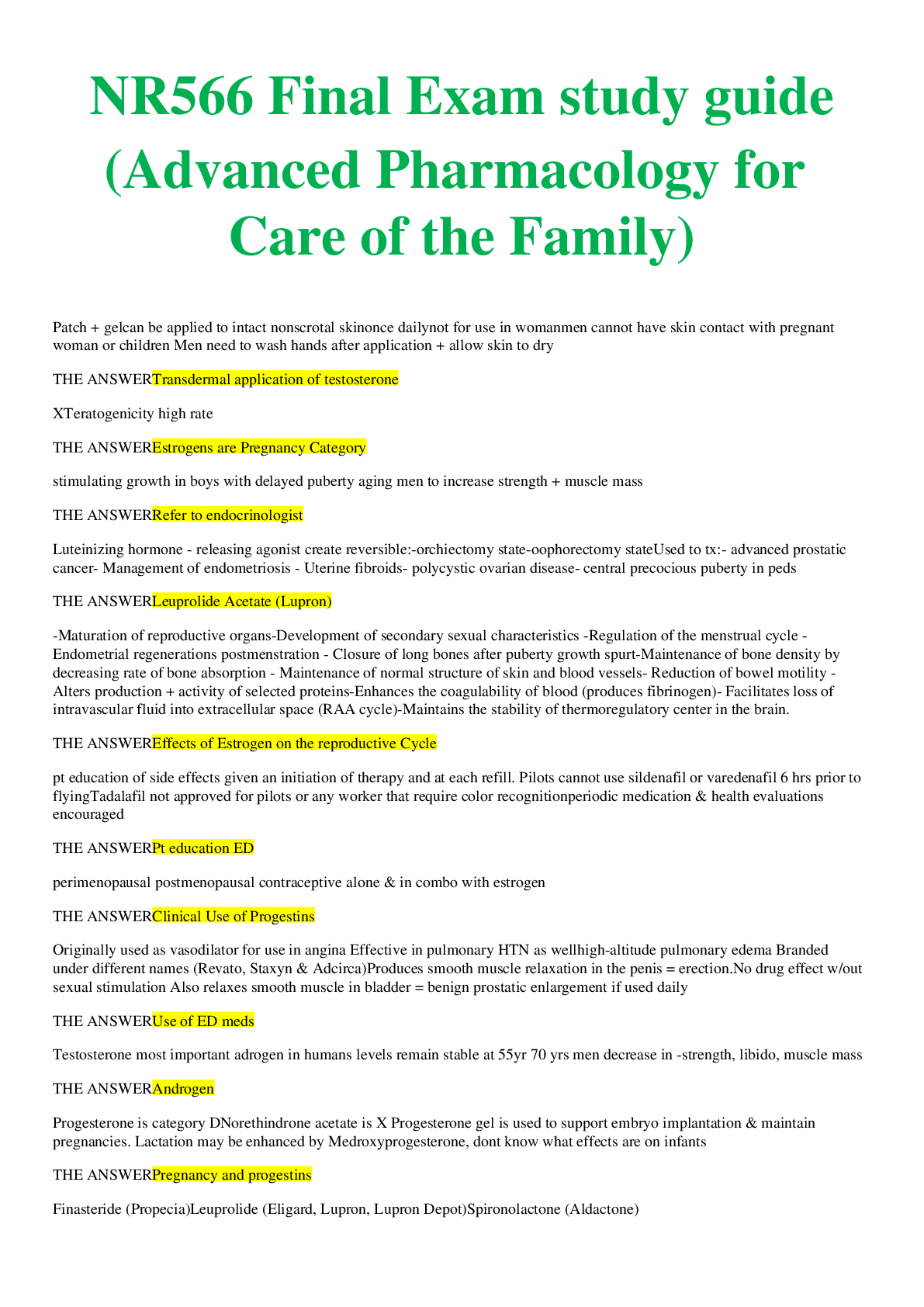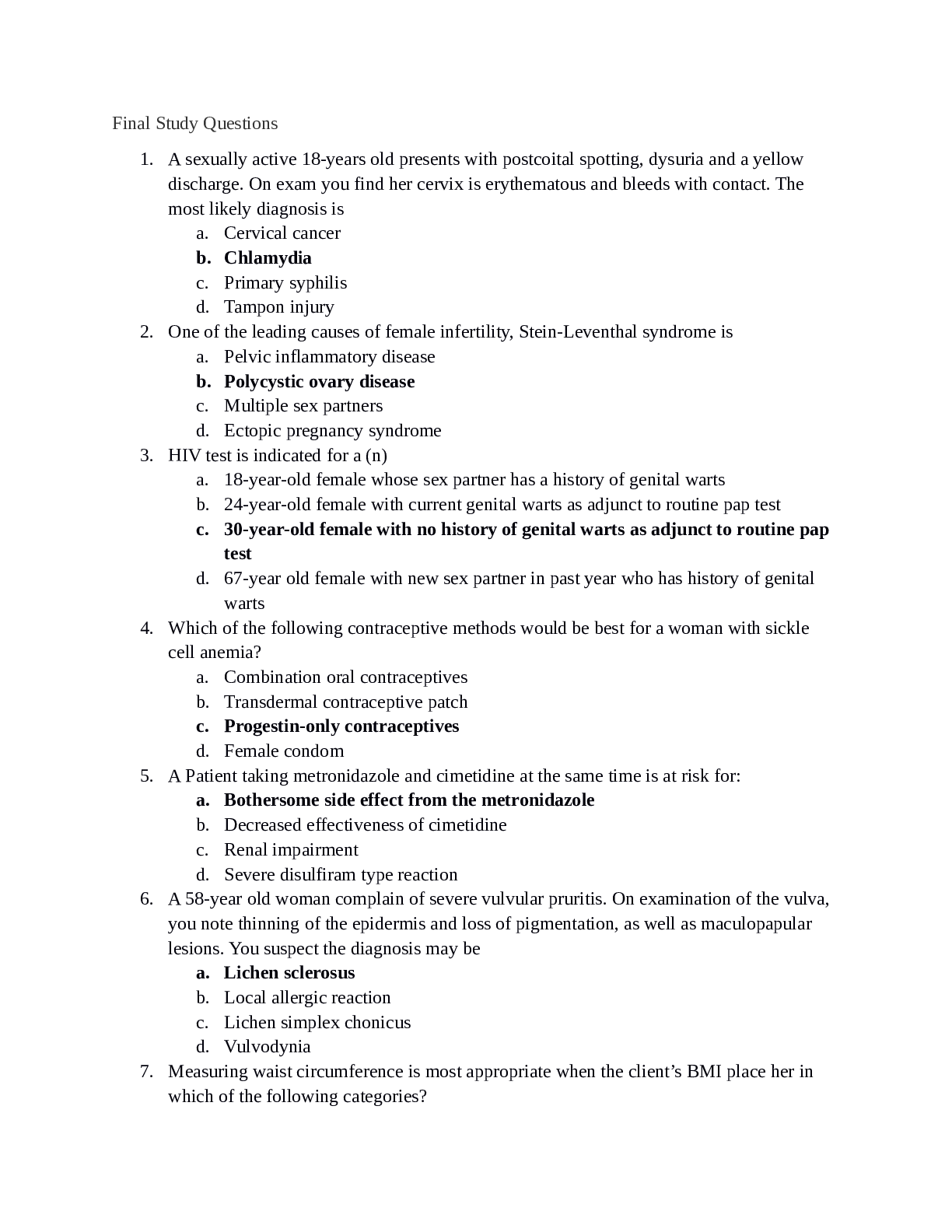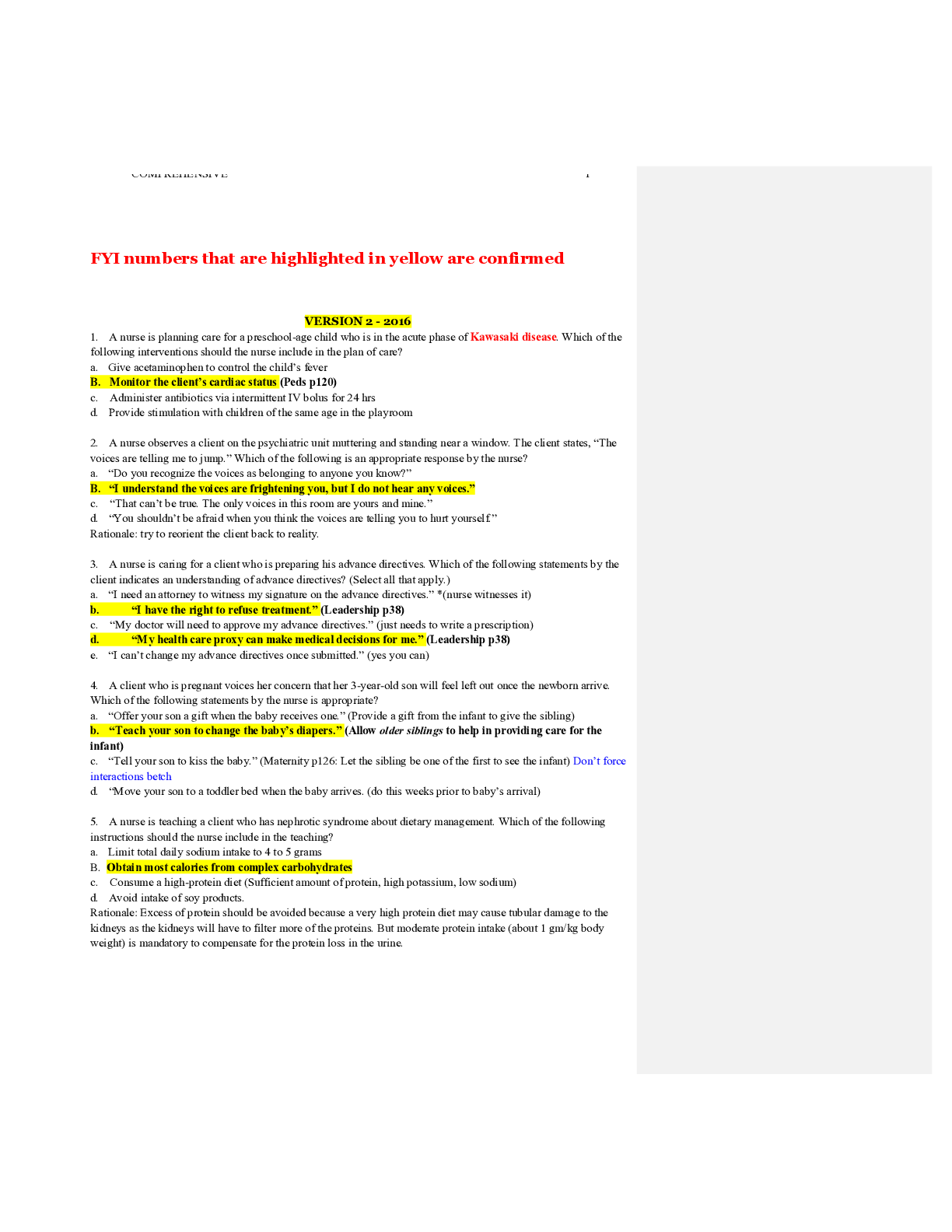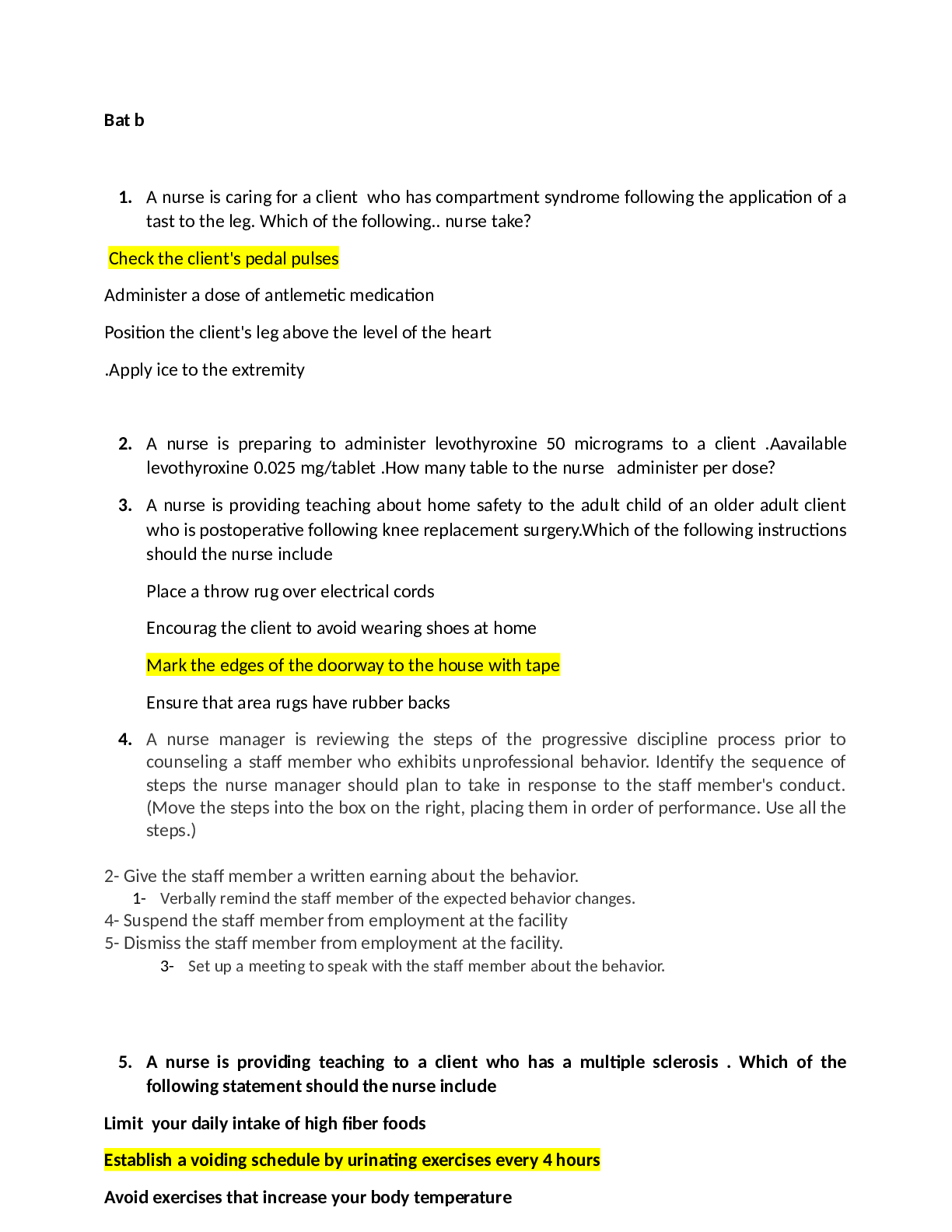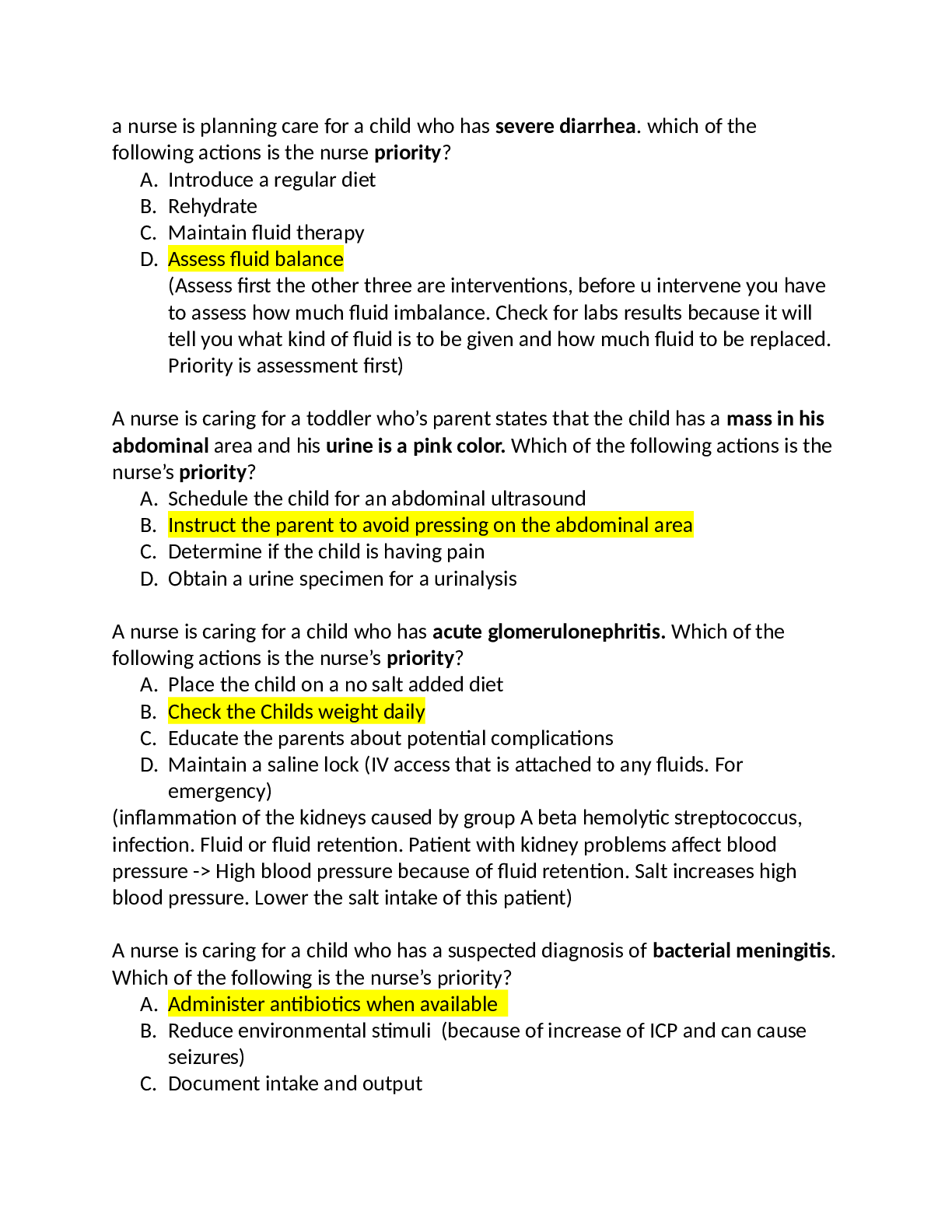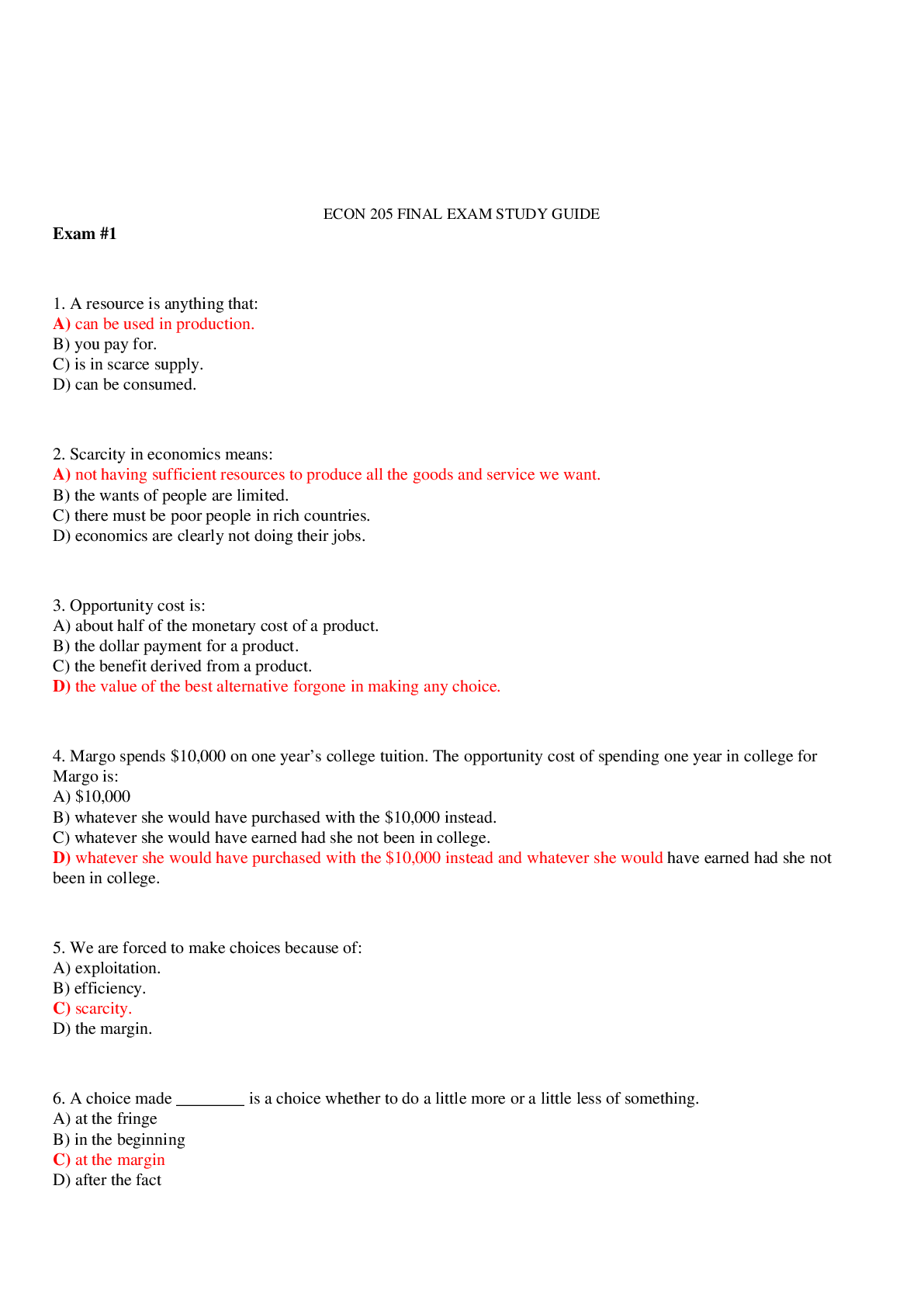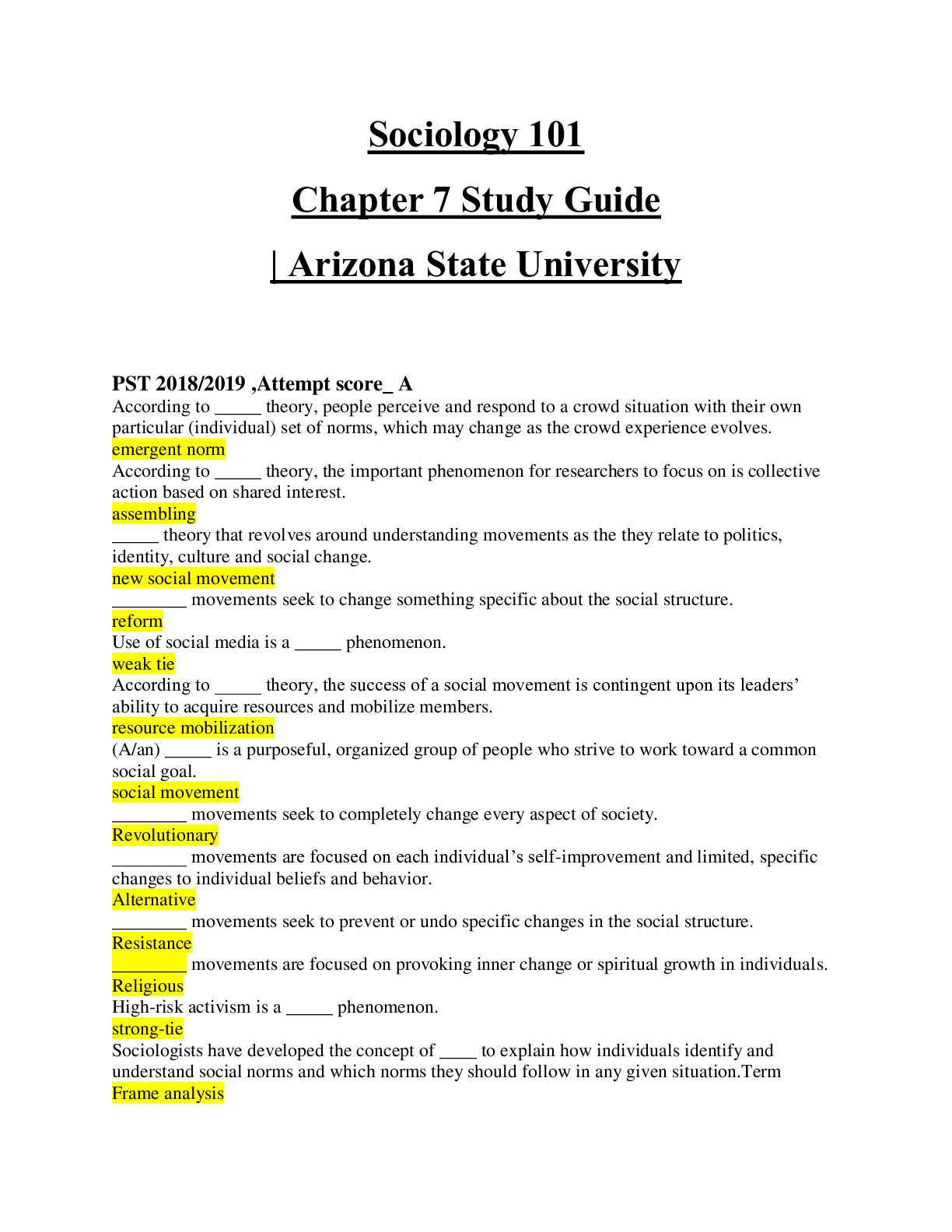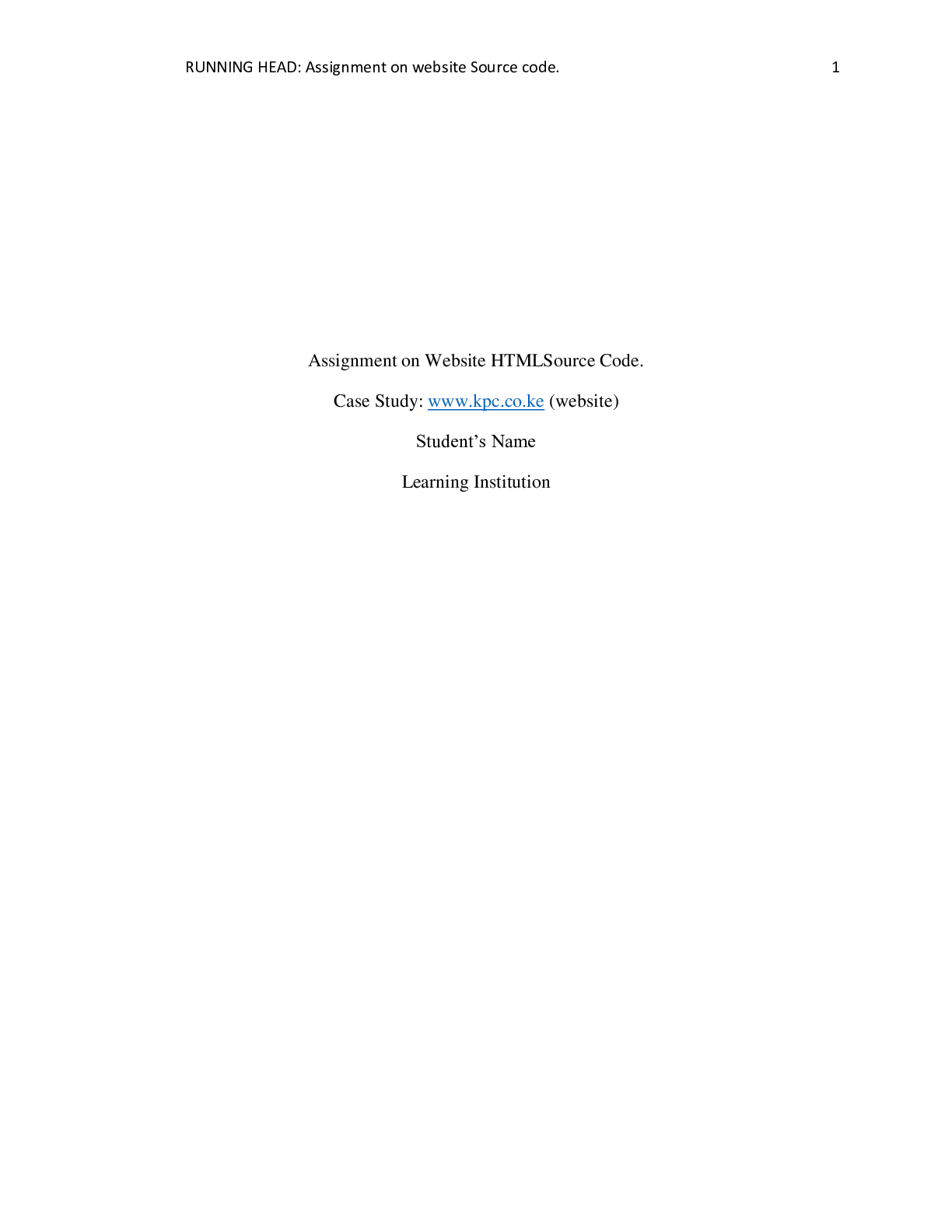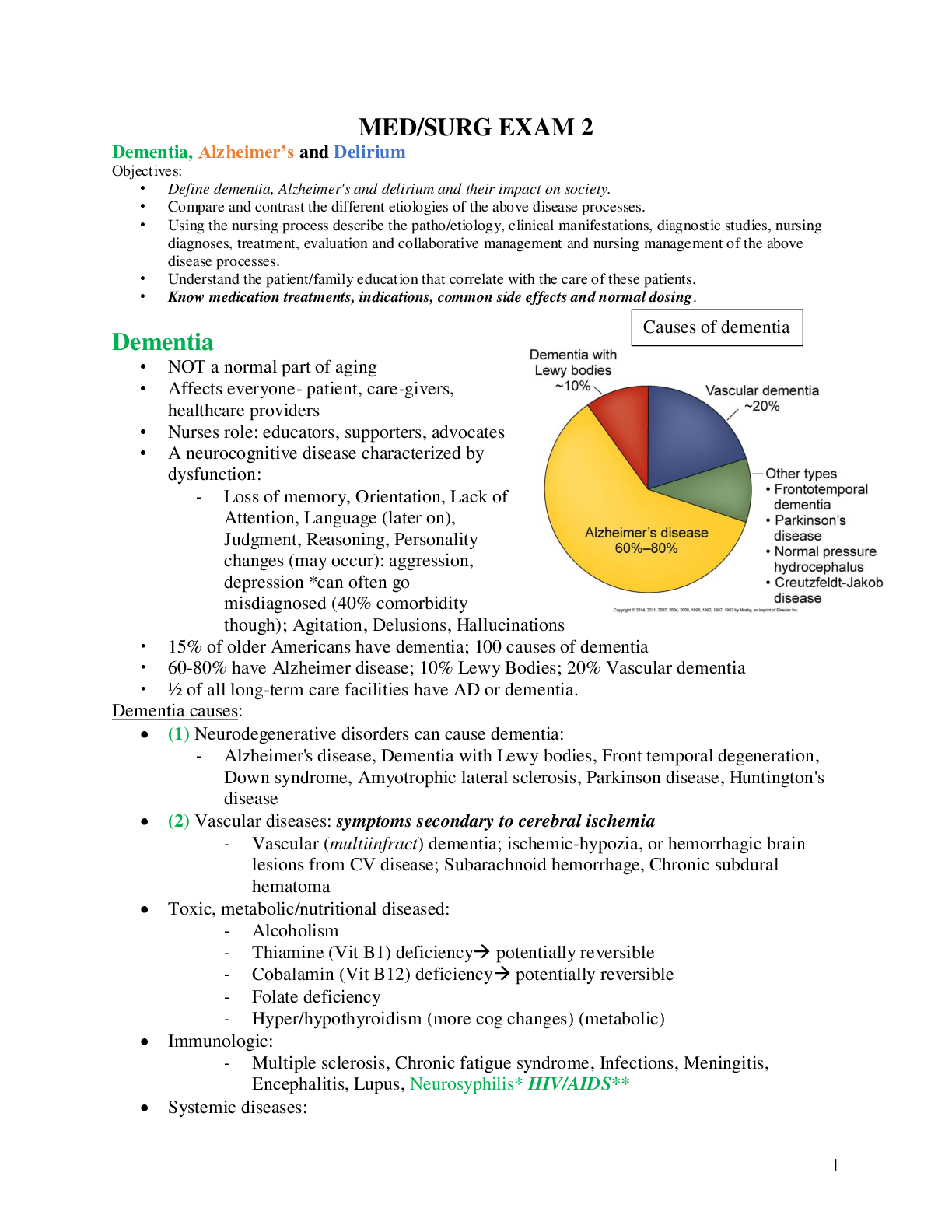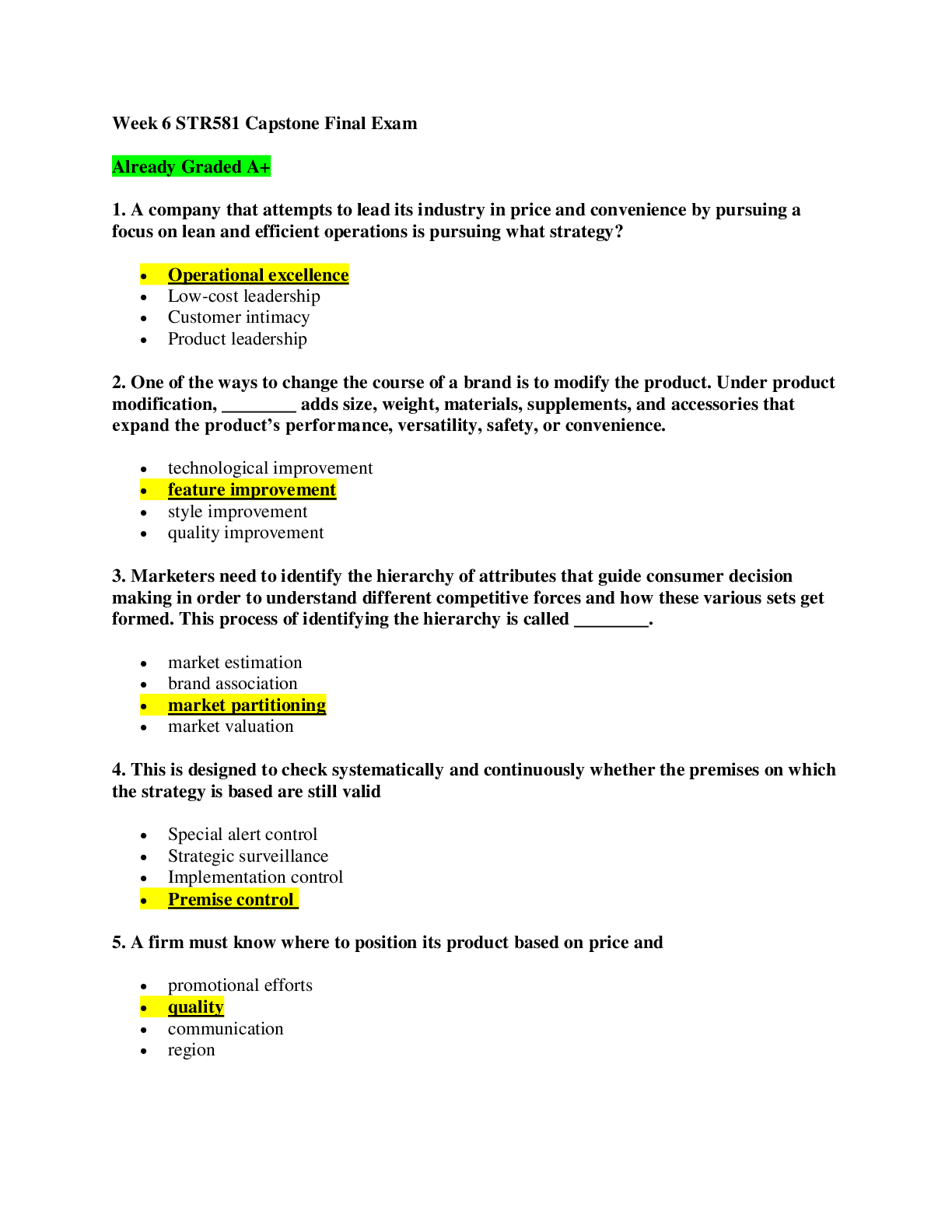RASMUSSEN COLLEGE MATERNAL CHILD NURSING NUR 2513 EXAM STUDY GUIDE
Document Content and Description Below
RASMUSSEN COLLEGE MATERNAL CHILD NURSING NUR 2513 EXAM STUDY GUIDE (100% CORRECT WITH ANSWERS EXPLAINED) 1. While the vital signs of a pregnant client in her third trimester are being asse... ssed, the client complains of feeling faint, dizzy, and agitated. Which nursing intervention is appropriate? a. Have the client stand up and retake her blood pressure. b. Have the client sit down and hold her arm in a dependent position. c. Have the client turn to her left side and recheck her blood pressure in 5 minutes. d. Have the client lie supine for 5 minutes and recheck her blood pressure on both arms. ANSWER: C. Have the client turn to her left side and recheck her blood pressure in 5 minutes. Blood pressure is affected by positions during pregnancy. The supine position may cause occlusion of the vena cava and descending aorta. Turning the pregnant woman to a lateral recumbent position alleviates pressure on the blood vessels and quickly corrects supine hypotension. Pressures are significantly higher when the patient is standing. This would cause an increase in systolic and diastolic pressures. The arm should be supported at the same level of the heart. The supine position may cause occlusion of the vena cava and descending aorta, creating hypotension. 2. A pregnant client has come to the emergency department with complaints of nasal congestion and epistaxis. Which is the correct interpretation of these symptoms by the health care provider? a. Nasal stuffiness and nosebleeds are caused by a decrease in progesterone. b. These conditions are abnormal. Refer the client to an ear, nose, and throat specialist. c. Estrogen relaxes the smooth muscles in the respiratory tract, so congestion and epistaxis are within normal limits. d. Estrogen causes increased blood supply to the mucous membranes and can result in congestion and nosebleeds. ANSWER: D. Estrogen causes increased blood supply to the mucous membranes and can result in congestion and nosebleeds. As capillaries become engorged, the upper respiratory tract is affected by the subsequent edema and hyperemia, which causes these conditions, seen commonly during pregnancy. Progesterone is responsible for the heightened awareness of the need to breathe in pregnancy. Progesterone levels increase during pregnancy. The client should be reassured that these symptoms are within normal limits. No referral is needed at this time. Relaxation of the smooth muscles in the respiratory tract is affected by progesterone. 3. Which suggestion [Show More]
Last updated: 1 year ago
Preview 1 out of 11 pages
Instant download
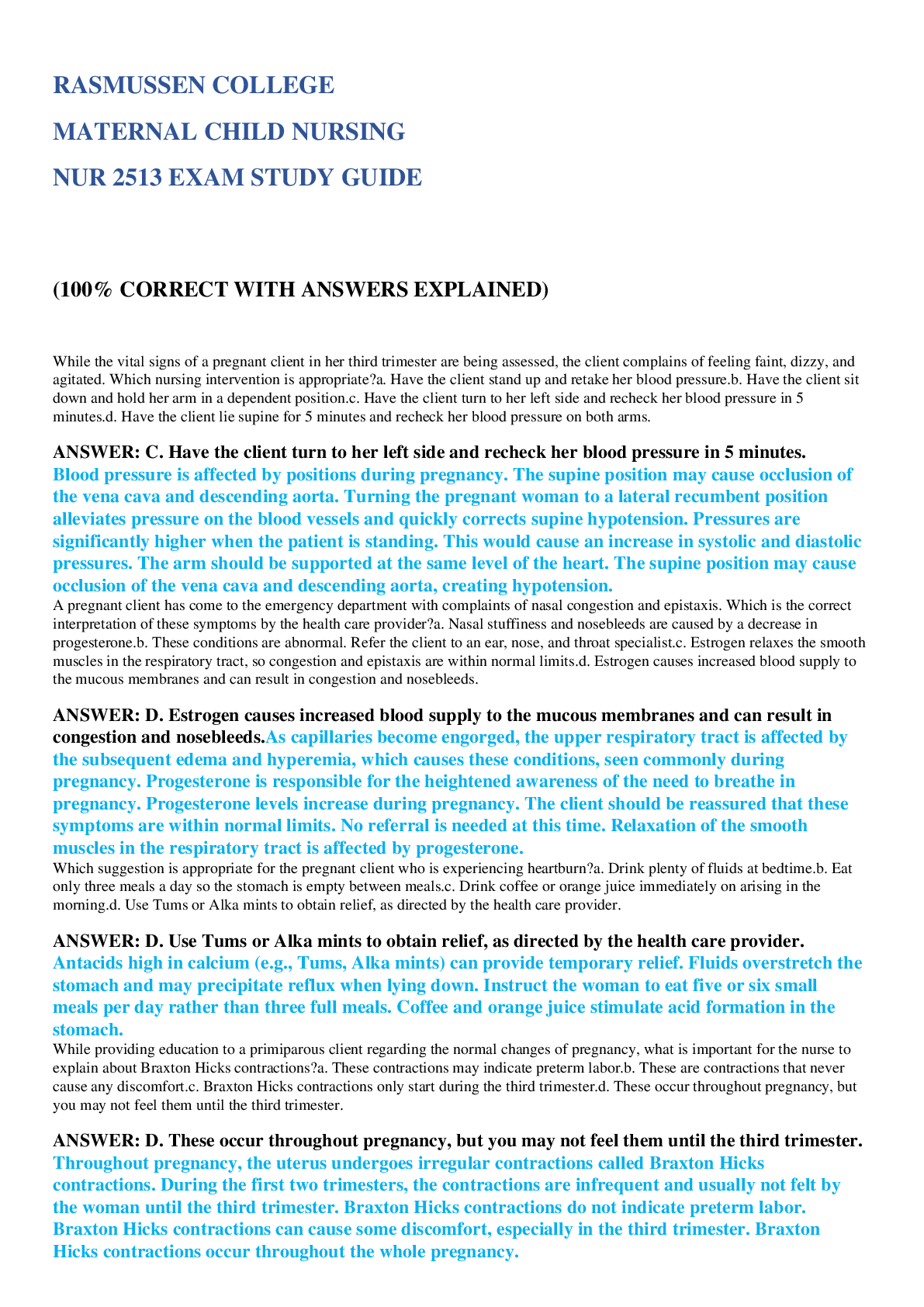
Buy this document to get the full access instantly
Instant Download Access after purchase
Add to cartInstant download
Reviews( 0 )
Document information
Connected school, study & course
About the document
Uploaded On
Dec 07, 2020
Number of pages
11
Written in
Additional information
This document has been written for:
Uploaded
Dec 07, 2020
Downloads
0
Views
104



